The Ugly Truth About Dirty Data Revealed with Susan Walsh
This blog post recaps the key insights from Susan Walsh's webinar on data management, emphasizing the importance of data cleaning, common pitfalls in analytics, and actionable skills for aspiring data professionals.
Ever found yourself staring at a spreadsheet, overwhelmed by a mass of information that seems to have taken on a life of its own? You’re not alone! In a recent webinar with data guru Susan Walsh, we delved into the chaotic world of data management, where inaccuracies reign supreme and clarity is often a distant dream. Together, we uncovered valuable strategies and nuggets of wisdom on how to transform messy data into a polished resource. Let’s take a closer look at what we learned and how you can apply these insights in your own data endeavors.
Understanding the Importance of Data Cleaning
What is Dirty Data?
Dirty data This includes issues like typos, missing information, and poor formatting. Think about it: if the information you’re relying on isn’t accurate, meaning can get lost, and poor decisions can be made. Dirty data can result in wasted time, money, and resources. You don’t want your decisions based on shaky ground, do you?
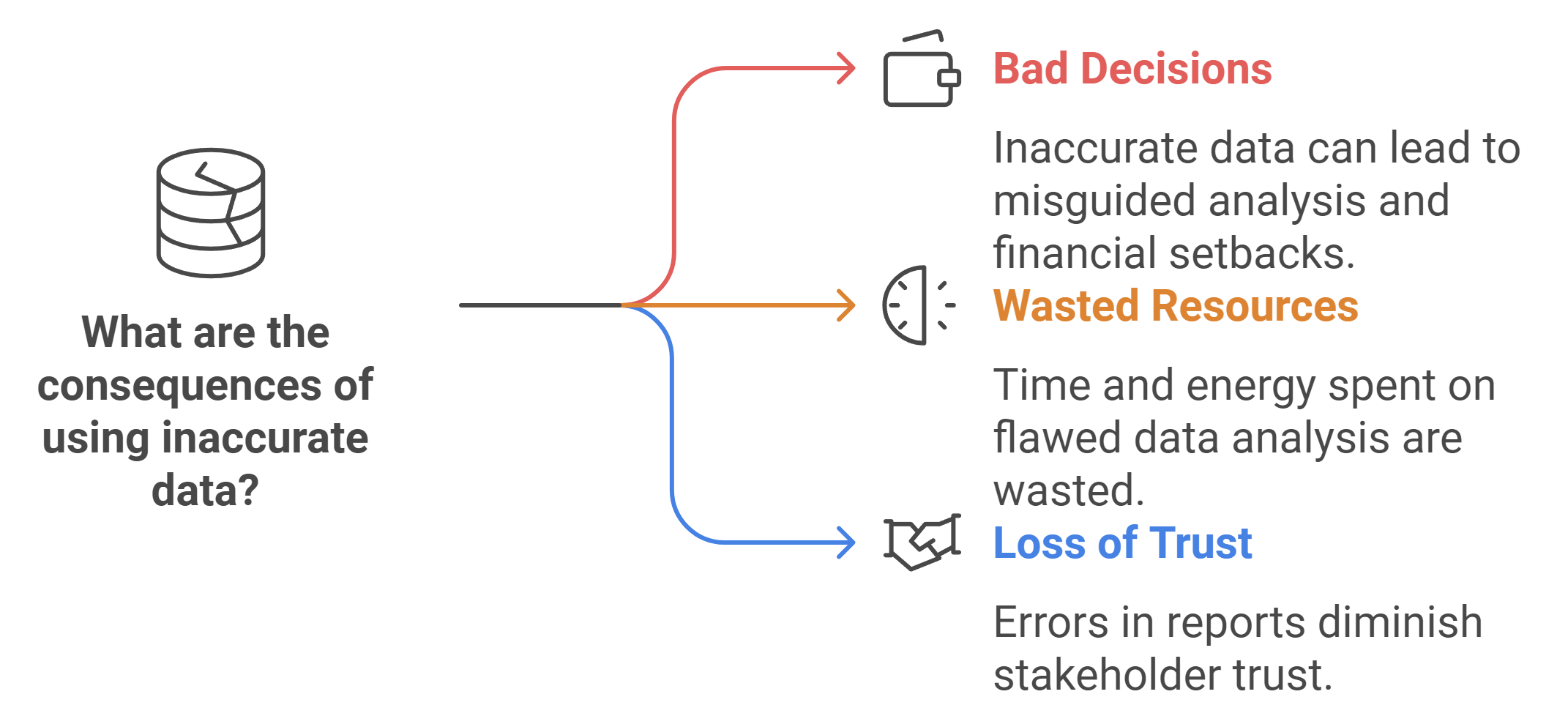
Implications of Dirty Data
Bad Decisions: When data is inaccurate, it can lead to misguided analysis. For example, if a company believes it has more customers than it actually does, it might overextend itself, leading to financial setbacks.
Wasted Resources: Imagine spending hours analyzing data only to find out it was flawed. The time and energy invested in that analysis are wasted.
Loss of Trust: If your stakeholders—be it clients or management—find errors in your reports, their trust in your work diminishes.
Impactful Real-World Examples
To illustrate the effects of dirty data, let’s consider a few examples:
Retail Sector: A major retail chain mistakenly priced items at a discount due to a missing entry in its database. This led to massive losses during sales, showing how important error-free data is in a competitive market.
Healthcare: A hospital that relies on patient data for treatments may face serious consequences due to incorrect information, leading to wrong medication being administered, which can jeopardize patient health.
Logistics: When companies don’t keep their shipping addresses updated, packages get sent to the wrong locations. This disrupts operations and costs money.
Enhancing Business Efficiency with Clean Data
Now, let’s shift focus. How can clean data boost your business efficiency?
Better Decision-Making: Correct data enables you to make informed decisions. When your analysis is based on accurate information, your strategies are likely to yield better results.
Increased Productivity: Spending less time fixing errors means your team can focus on more productive tasks. The time saved can be reallocated to strategic initiatives.
Cost Savings: Reducing errors in data entry can save significant costs associated with redoing work, correcting reports, or even potential losses due to misinformation.
Practical Steps for Data Cleaning
You might wonder how to ensure your data stays clean. Here are some actionable tips:
Engage with Data: Don’t just collect data; actively explore and play with it. The more you interact with your data, the better you’ll understand its nuances.
Establish Definitions: Develop clear data definitions and use a data dictionary. This reduces misunderstandings among team members.
Utilize Tools: Use software, such as Excel or OmniScope, to identify errors like duplicates or inconsistencies efficiently.
Key Takeaway
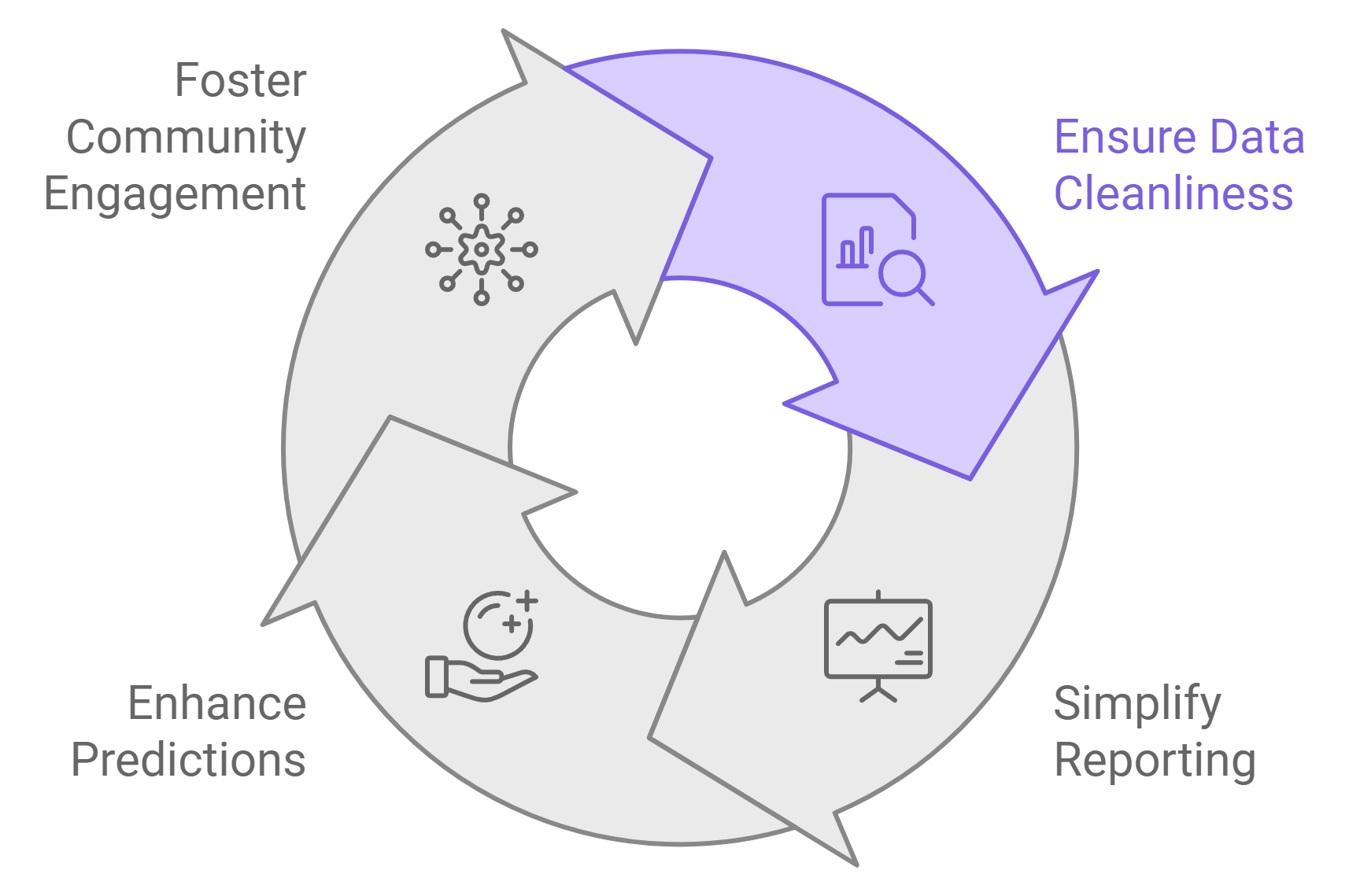
Maintaining clean data in your organization is essential. Just as a garbage collector keeps a city tidy, you must ensure data cleanliness. It may seem tedious, but keep it in mind: organized, refined data simplifies everything from reporting to predictions. Plus, with the world moving towards AI, the demand for clean, reliable data only grows.
Have questions or want to share your data management experiences? Engage with your peers and foster a community centered around continuous learning. Remember, dirt in your data leads to dirt in your decisions. Let’s keep it neat!
Essential Skills for Aspiring Data Professionals
1. Curiosity as a Vital Skill
Curiosity is not just a trait; it’s a fundamental skill for data professionals. Ask yourself: Do you want to dig deeper? Good! The desire to explore encourages you to ask questions. Instead of simply searching for answers on Google, engage actively with the data. Have you ever wondered why your dataset has outliers? Explore! Maybe it could lead you to discover a hidden pattern.
Being curious means you're willing to break things to see if they can be made better. It’s like being a detective piecing together clues. You need to take initiative and seek answers that matter. The insights from the
DataScience.Show with Susan Walsh
highlighted how curiosity guides you to exceptional learning moments.
As Susan mentioned, embracing this mindset allows you to extract true value from data instead of being a passive consumer. It opens doors to more profound analysis and even leads to innovative solutions. Curiosity is your superpower!
2. Importance of Hands-On Practice with Datasets
Let’s face it—reading about data management is one thing, but getting your hands dirty is where the real magic happens. Practice is key. Susan emphasizes that beginners should involve themselves in practical projects. You don't need to find a big, glamorous project right away. Small tasks, such as cleaning data, can teach you foundational skills.
Consider volunteering to help colleagues with their data needs.
Explore online resources, like
data.gov.uk, where you can find free datasets.
Get involved! It’s through wrestling with real data that you learn how to deal with things like typos, missing information, and formatting inconsistencies. Here’s a thought: imagine trying to cook without ever handling ingredients. You’d never know the right flavors or techniques! Similarly, hands-on experience is crucial in the data world.

Moreover, Susan highlights the importance of mastering foundational tools such as Excel before moving on to complex analytics platforms like Power BI. Excel isn’t just a tool; it’s a stepping stone to more advanced data systems.
3. Learning from Failure
Have you ever felt defeated after a wrong calculation or a dataset that just didn’t align? Here’s the truth: failure is your best teacher. Susan pointed out that some of the most valuable experiences come from mistakes. Picture this: a scientist conducting experiments, failing over and over, but eventually discovering something groundbreaking. This is how you should view setbacks in data management.
Learning from failure means analyzing what went wrong. Is there a common error you keep making? Maybe it’s a typo, a missed value, or even formatting issues stemming from international standards. Face these challenges. Adapt your strategies and utilize methods like a data dictionary to help provide clarity and consistency within your organization.
Remember, every error is an opportunity to refine your skills. Instead of hiding from your mistakes, embrace them. Use them to fuel your growth. As you navigate your journey in the data profession, understand that the road may be bumpy, but it's paved with learning.
Conclusion
Curiosity, practical experience, and learning from failure are essential components of the toolkit needed by aspiring data professionals. These attributes not only enhance your technical skills but also enrich your understanding of data management.
Common Mistakes in Data Management
Handling data is no small feat. You probably know this if you've ever spent hours analyzing numbers or sorting through spreadsheets. But, even the best of us make mistakes. In her recent webinar, Susan Walsh highlighted some common pitfalls that anyone can fall into while managing data. Let's delve deeper into these mistakes and arm ourselves with knowledge to avoid them.
1. Typos and Spelling Errors Leading to Duplicates
It's astonishing how a simple typo can lead to chaos. Ever typed your name wrong? It happens all the time. But in data management, these small errors can cause big problems. A typo in your dataset can create duplicate entries. This means you might think you have more data than you actually do. It's like having two identical ice cream cones when you only wanted one! Now, instead of clarity, you're facing confusion.
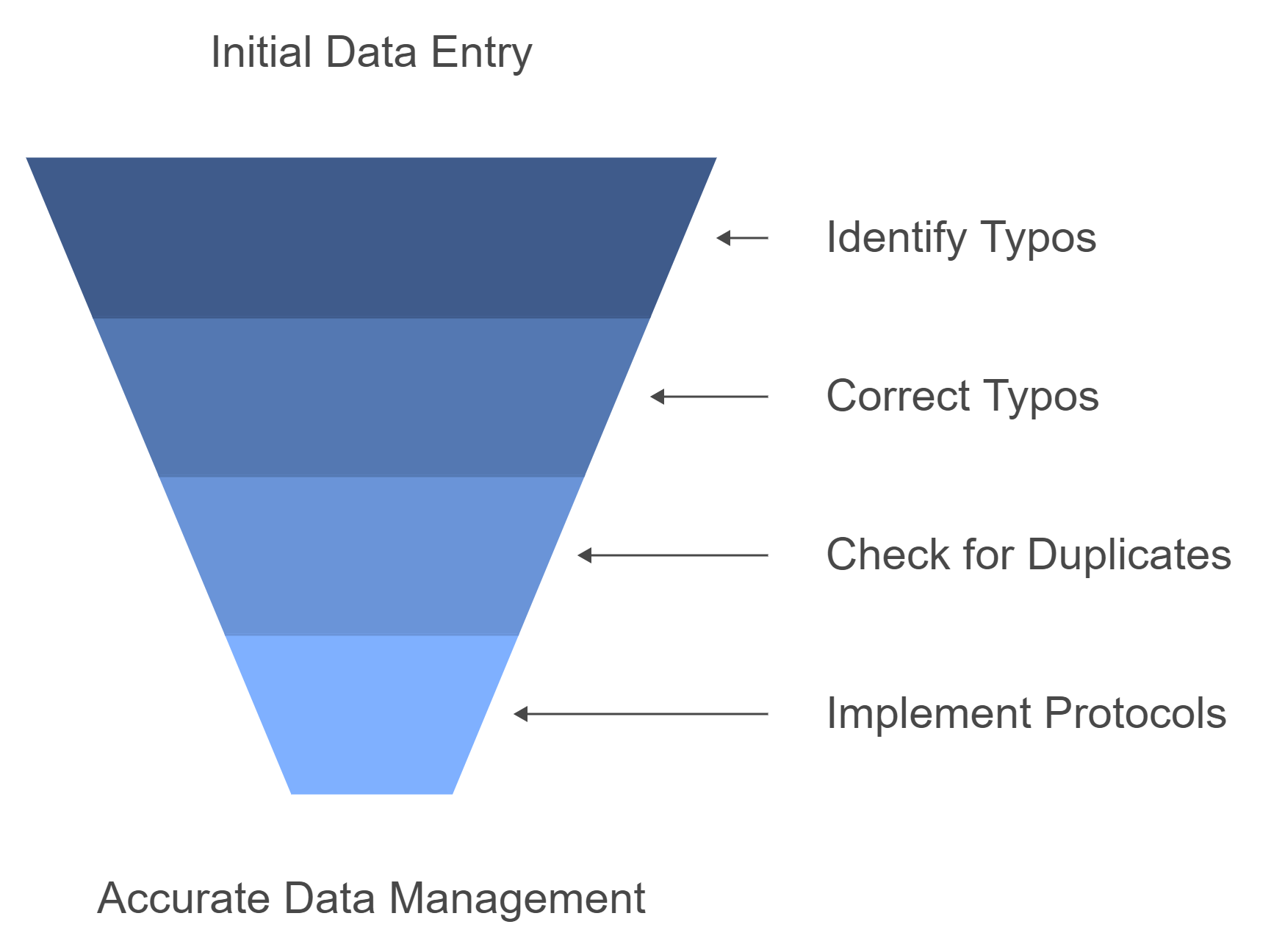
How do you tackle this issue? You could use tools that automatically check for and correct typos. Excel, for example, offers functions that can help you identify duplicates. You might also encourage your team to double-check entries. Maybe even consider implementing a set protocol for data entry. Consistency is key here.
2. Missing Data Points Causing Reporting Issues
Have you ever tried to complete a puzzle but found a piece missing? Frustrating, right? That's exactly what happens when you encounter missing data during analysis. Missing data points can throw off your reports and make your conclusions unreliable. How can you make decisions based on incomplete information?
To avoid this pitfall, establish a solid data entry process. This means ensuring that all required fields are filled out before submission. Training staff on the importance of complete data is vital, too. You could introduce a validation process that flags incomplete entries. Remember, it’s better to take a little longer to collect complete data than to rush and end up guessing the missing pieces.
3. Formatting Inconsistencies Across Datasets
Imagine you’re trying to arrange a group dinner, but everyone writes their RSVP in different formats. One person says, “1/5/23” while another writes, “5th Jan 2023.” Confusion sets in. This is what happens when there are formatting inconsistencies across datasets!
Data can come from various sources, each with its own formatting rules. Inconsistent date formats or currency symbols can wreak havoc on your analysis. As Susan pointed out, having a shared understanding is crucial. Developing a data dictionary within your organization could help. This dictionary can define everything from number formats to date styles. Everyone on your team will be on the same page, making data management smoother.
Best Practices for Avoiding These Mistakes
Validation Checks: Regularly implement checks in your data entry forms to flag possible typos or missing data.
Use Tools: Invest in software that helps identify duplicates or inconsistent formats efficiently.
Train Your Team: Provide training to your colleagues on how to enter data correctly, emphasizing the impact of mistakes on overall reporting.
Standardization: Create and maintain a document outlining standard practices for data entry.
Data management is not just about collecting numbers; it's about creating accuracy and reliability. By avoiding these common mistakes, you ensure that the data you work with is clean and trustworthy. And who's to say those typos, missing points, or formatting errors won’t cost you a big decision down the line?
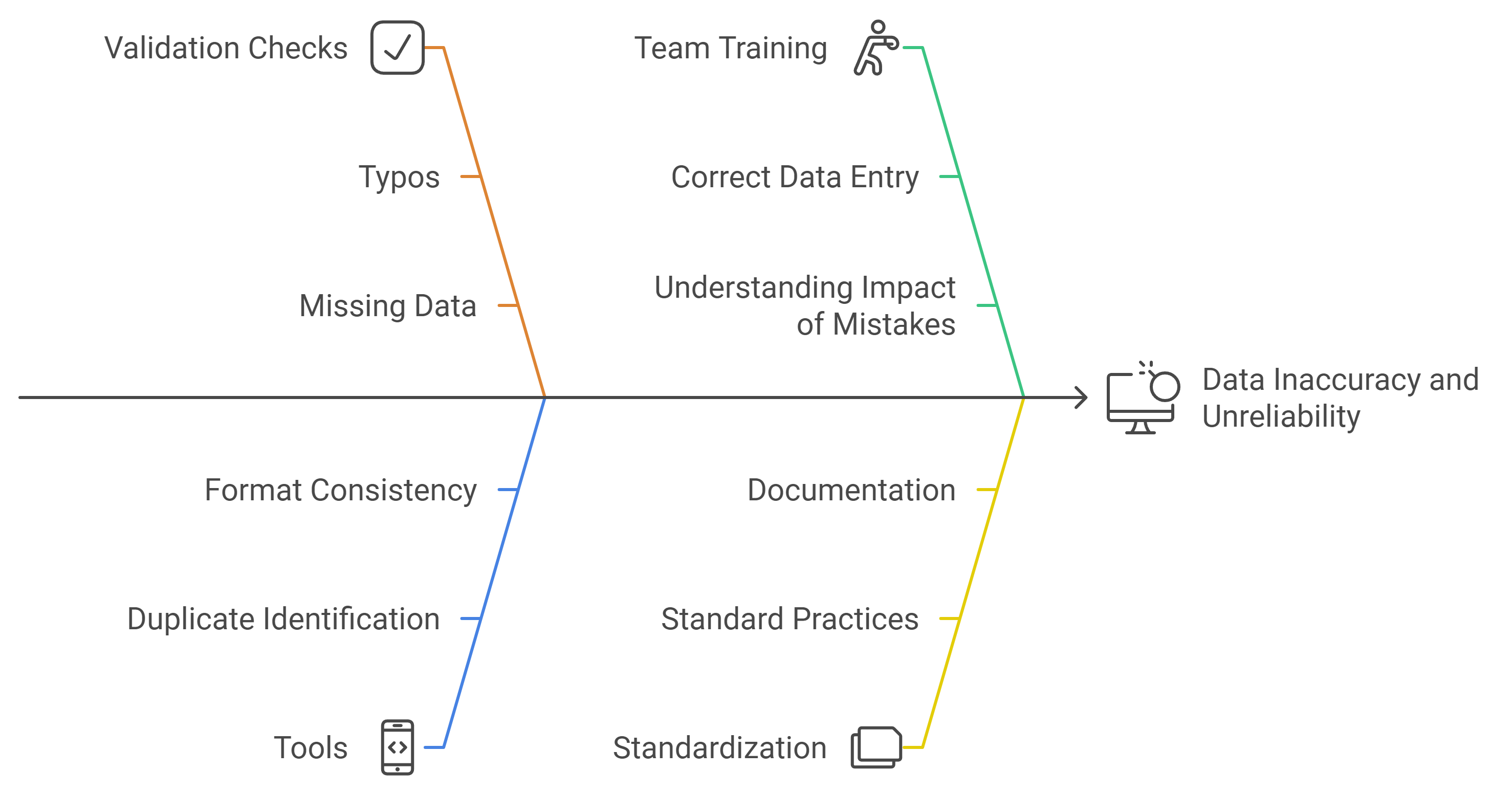
Remember, in the words of Susan Walsh, “Failure is a significant learning opportunity.” Don’t shy away from mistakes. Use them to grow, and strive to keep your data as polished as possible.
The Art of Categorizing and Classifying Data
Establishing a Clear Methodology for Data Classification
To navigate the vast ocean of data, establishing a clear methodology for classification isn’t just helpful; it’s essential. Think of it as a map guiding you through otherwise chaotic information. Have you ever tried finding something in a cluttered room? It’s frustrating, right? Data can be just like that! A systematic approach allows you to categorize data logically, making retrieval easier.
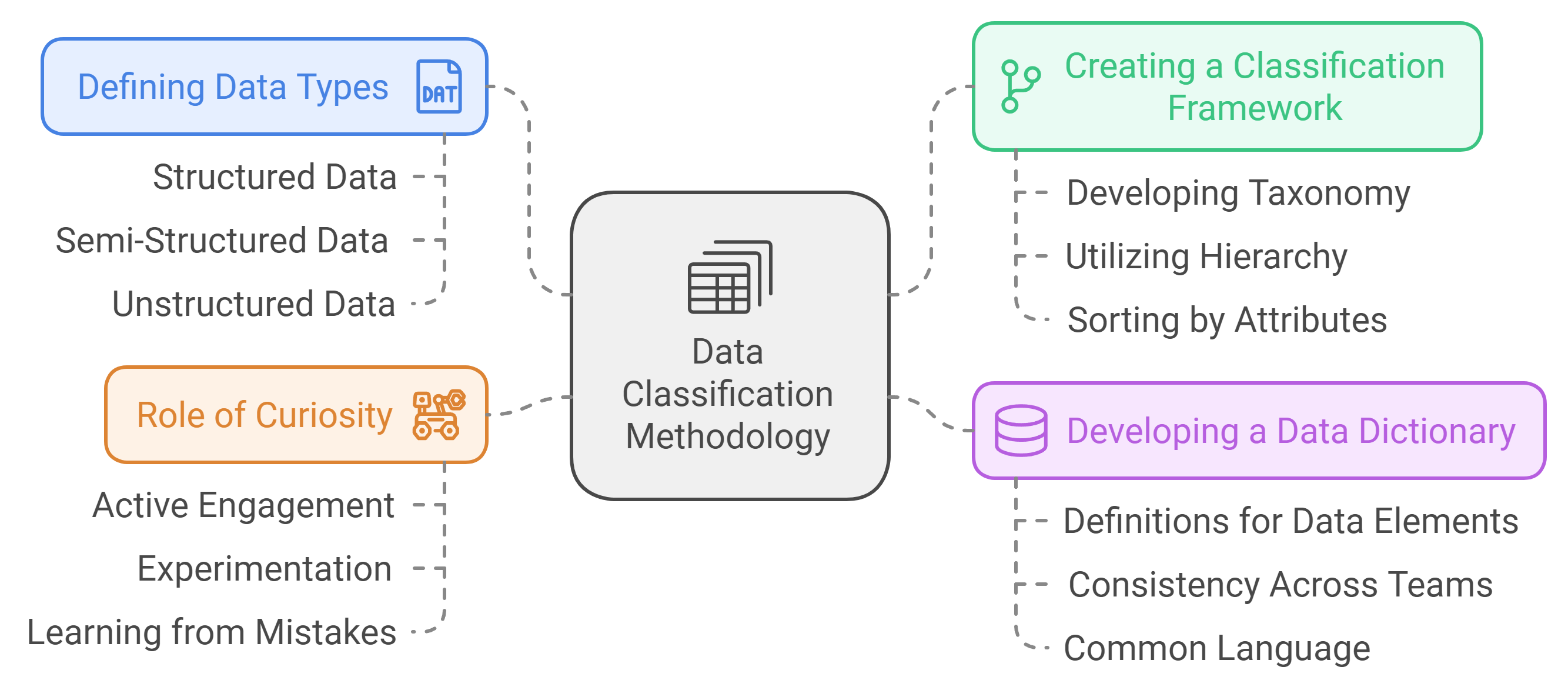
Define your data types. What kind of data do you have? Is it structured, semi-structured, or unstructured?
Create a classification framework. This could involve developing a taxonomy or utilizing a hierarchy. You can use categories to sort by attributes like relevance, quality, or source.
Develop a data dictionary. A data dictionary includes definitions for each data element, providing consistency across teams. This ensures that everyone speaks the same language when discussing data.
According to Susan Walsh in her recent webinar, curiosity plays a vital role for anyone diving into data management. Being curious pushes you beyond the surface. Instead of just Googling answers, engage actively with your data. Experiment with it. Sometimes, the best learning comes from mistakes.
Using Tools like Excel for Effective Categorization
Excel is often the unsung hero in the realm of data management. It might seem basic, but its features can significantly boost your data categorization efforts. How do you start? Here are some actionable steps:
Import Data: First, gather your dataset. This could be from various sources, like CSV files or databases.
Utilize Functions: Excel functions like VLOOKUP or IF statements can help you quickly categorize data based on predefined criteria.
Data Validation: Implement data validation to prevent input errors like typos or formatting inconsistencies. This reduces future headaches!
In her discussion, Susan emphasized that proficiency in foundational tools like Excel can enrich your understanding of more complex ones, such as Power BI. Efficiency in Excel provides an excellent stepping stone, equipping you with crucial data management skills.
Real-Life Examples of Successful Classification Projects
Looking to be inspired? Real-life examples can be incredibly motivating. Let's explore a few that highlight effective data classification:
Case Study 1: A healthcare organization successfully categorized patient records. By developing specific classifications for each type of patient data—demographic, medical history, and treatment progress—they improved their data retrieval time by 60%.
Case Study 2: An e-commerce platform implemented a classification system for product data. This allowed them to organize inventory by categories and subcategories effectively, which resulted in a 40% increase in sales due to streamlined navigation for customers.
Case Study 3: A marketing firm cleaned up its client database. By focusing on standardizing addresses and contact info formats, they minimized duplicates and errors, enhancing communication effectiveness.
These examples showcase the transformative power of a proper classification methodology. Data management doesn’t have to be daunting. Embrace the process as you develop your skills and confidence.
Ultimately, managing data with clarity and purpose is what makes the difference between chaos and a well-ordered system. Remember, taking ownership of every bit of information is crucial. Just as Susan compared maintaining clean data to the role of a garbage collector, don’t overlook its significance. Ensuring accuracy from the start saves you time and effort in the long run!
Leveraging Technology for Data Management
Choosing the Right Tools for the Job
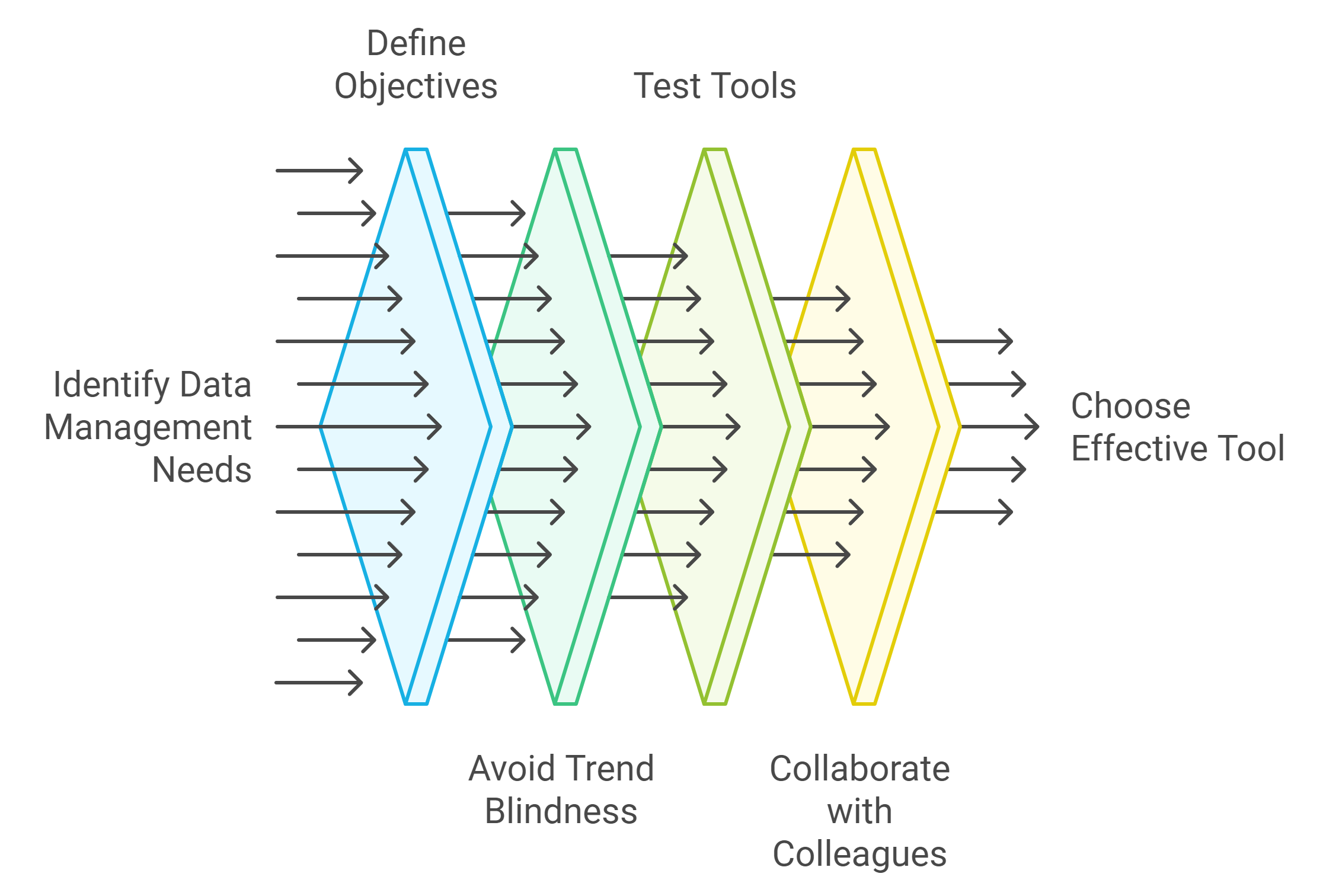
In the world of data management, the tools you choose can significantly affect how efficiently you work. It's essential to consider your specific needs before selecting a tool. Ask yourself: What do I want to accomplish? Are you cleaning data, performing analysis, or creating visual insights? Understanding your task will guide your choices.
A common mistake many make is following trends blindly. Just because a tool is popular doesn’t mean it’s right for you. Instead, focus on usability and effectiveness. Explore a variety of options to determine what best aligns with your tasks. Keep in mind; even the best tools can become burdensome if they don't fit your workflow. So, test a few before committing.
Furthermore, consider collaborating with colleagues. Engaging with others can help you discover tools you might not have encountered. It’s like sharing a playlist; everyone might have different tastes, but together you can uncover hidden gems. Community often leads to better resource discovery.
Susan’s Recommended Tools for Data Cleaning
During a recent talk with Susan Walsh, well-known for her expertise in data cleaning, she emphasized the significance of foundational tools. Her top pick? Excel. It might sound simple, but mastering Excel can provide you with strong data handling capabilities. Imagine controlling hundreds of rows and columns effortlessly. It's all about developing a comfort level with your tools.
Beyond Excel, Susan mentioned tools like OmniScope for more advanced data duplication tasks. These can help you sift through large datasets to identify and remedy inconsistencies. Susan's approach stresses, "If your data is clean, your analyses are sharper.” So, keeping this in mind, how clean is your data?
Start practicing with Excel for data organization.
Experiment with OmniScope for data deduplication.
Leverage online resources for data sets to enhance your practical experience.
Avoiding Overwhelm with Emerging Technologies
Technology is evolving rapidly, and it can feel overwhelming. New applications, platforms, and techniques pop up almost daily. How can you keep up? Establishing a clear learning path is vital. Rather than attempting to learn everything at once, break your education into manageable chunks.
Susan encourages continual learning but also cautions against information overload. "You don't have to know everything about AI today," she stated. "Focus on what you need." When embarking on your educational journey, try to prioritize based on your current tasks and project demands.
Employ strategies like:
Joining data management communities to hear about the latest tools and trends.
Engaging in hands-on projects to cement what you've learned.
Taking breaks from technology to reflect on your learning and avoid burnout.
Additionally, engaging with platforms like LinkedIn can provide support and allow you to connect with fellow data management professionals. Sharing successes and challenges within the community can lead to a stronger network and motivate you to push through learning curves.
Final Thoughts on Engagement and Learning
As Susan pointed out, don't fear the rise of artificial intelligence in data management tasks. In fact, the need for clean data is more prominent now than ever! Opportunities for collaboration and learning are abundant. Just think of yourself as an architect for data; each tool you choose is a brick in your foundation. Building a solid connection with your data community will only enhance your growth.
By focusing on your needs, implementing Susan's tool recommendations, and maintaining a steady pace as you confront emerging technologies, you’ll be well on your way to becoming proficient in data management.
Building a Community Around Data Management
When it comes to data management, one fact stands out: networking is crucial. You might wonder, why networking? The answer is simple. In the data space, building connections can lead to knowledge sharing, partnership opportunities, and valuable insights that can guide your career.
1. The Importance of Networking in the Data Space
Consider this: if you're the only one in your organization who knows how to clean data, you could be in trouble. Networking allows you to discover best practices and to learn from others. Imagine attending a conference or even participating in a local meetup. Connecting with individuals who have different experiences than you helps broaden your understanding of data management. You may find someone who faced similar challenges and overcame them, sharing solutions that could save you time and frustration in your own work.
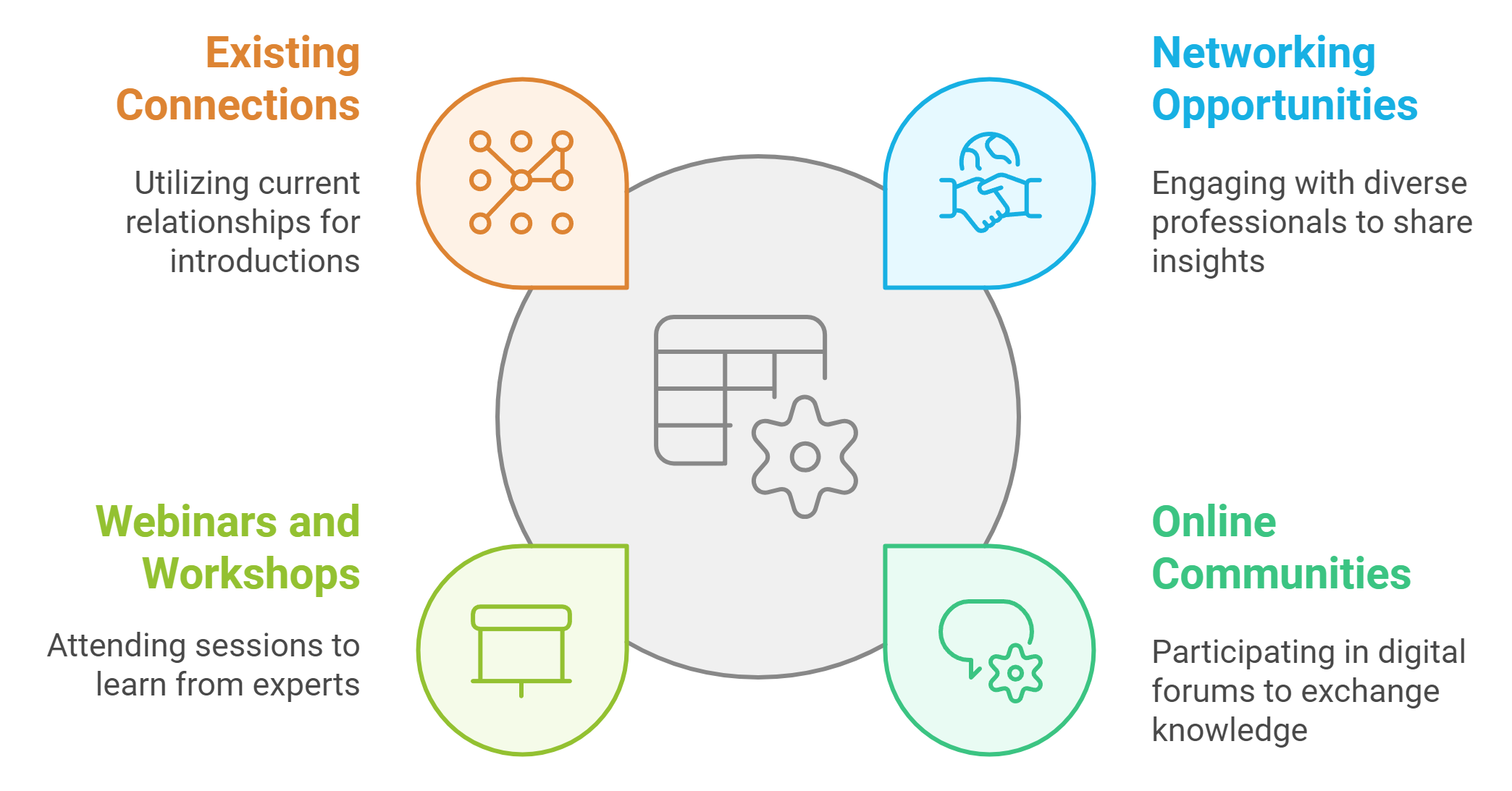
Join Online Communities: Platforms like LinkedIn host groups where data professionals gather. Engage in discussions, ask questions, and share your insights.
Attend Webinars and Workshops: These can be great places to learn the latest trends in data management, as well as to meet industry experts.
Leverage Your Current Network: Your colleagues and acquaintances can introduce you to others. Don't hesitate to tap into your existing connections.
2. Sharing Resources and Learning from Others
Have you ever felt stuck on a project? You're not alone. Other data professionals have likely faced similar hurdles. That’s one of the reasons why sharing resources is so invaluable. When you exchange tips, tools, or techniques with peers, it becomes easier to tackle challenges.
Think about it—collaboration can lead to breakthroughs that solitary work simply can’t achieve. For example, as highlighted in a recent webinar with Susan Walsh, you can begin experimenting with free datasets available online. Engaging actively with data, even if it's not glamorous, builds essential skills.
Volunteering Your Skills: Offer your expertise to colleagues or local nonprofits. This enhances both your capabilities and your network.
Seek Feedback: Share your projects with others for critique. Constructive criticism can lead to growth and improvement.
Document Your Learning Journey: Write about your experiences and share them in community forums or on social media. This not only helps you solidify your own understanding but can assist others as well.
3. Creating an Open Environment for Collaboration
To truly excel in data management, it's not just about what you know but how you share that knowledge. Creating a culture of collaboration fosters an environment where everyone feels comfortable participating. Think of your workplace as a garden; it thrives when everyone contributes to its upkeep.
As Walsh noted, fostering connections and sharing your journey—both successes and failures—can significantly enhance community engagement. Imagine asking a colleague about their experiences with a data cleaning tool. The insights from that conversation can unlock new approaches for your own work.
Encourage Open Communication: Create forums—whether online platforms or regular meetings—where team members can discuss challenges and share insights.
Implement Tools Together: Work as a team to adapt tools like Excel or Power BI, allowing novice users to learn from their more experienced counterparts.
Support One Another: Recognize individual contributions. As you celebrate each member's achievements, it builds confidence and encourages ongoing participation.
Engagement is key. As you participate in discussions, share insights, and connect with others, note the importance of maintaining clean data. As Susan analogized in her talk, think of data cleaning like garbage collection—essential but often overlooked. Everyone must contribute to data management practices from the start.
So, what will you do next? Will you reach out to someone in your network, join an online community, or perhaps ask a colleague to share their recent experiences? There's a whole world out there, waiting for you to grasp those opportunities!
Conclusion: The Continuous Journey of Data Management
As we wrap up this discussion on data management, it’s crucial to reflect on some vital lessons learned. The journey is ongoing and often challenging, yet it’s incredibly rewarding. One key takeaway from the engaging discussion with Susan Walsh is the ongoing importance of cleaning and maintaining data. Think of data like a garden. If you neglect the weeds, they multiply. Similarly, dirty or poorly managed data can spiral out of control, leading to inefficiencies and potentially massive organizational setbacks.
Data cleaning often feels like a thankless job. Yet, it's essential. Susan uses the analogy of a garbage collector to emphasize this point. Just as garbage collection is a necessary but often overlooked service, managing data cleanliness is crucial for a smoothly operating organization. When data is clean, it leads to more insightful analyses, better decision-making, and ultimately, improved outcomes.
Reflections on the Evolving Nature of Data Careers
The realm of data is continuously evolving. As you navigate your own path, keep in mind that the role of data professionals is not static. Whether you’re an aspiring data analyst or someone deep into data science, you will find that the skills needed are always changing. What was relevant last year may not be as effective today. The webinar highlighted the necessity for continuous learning. Do not shy away from new technologies or tools. Instead, embrace them! This mindset will position you favorably in a landscape that is consistently reshaped by innovation.
It’s also worth noting that data responsibilities can differ greatly from one organization to another. In some roles, you may find yourself mainly cleaning and organizing data. In others, you could be tasked with high-level analytics and dashboard creation. Each position contributes to the data lifecycle and plays a critical role in how organizations interpret their information. To succeed, understand the expectations of your specific role and adapt your skills accordingly.
Inspirational Thoughts for Aspiring Data Professionals
For those stepping into the world of data, remember—curiosity is a cornerstone of success. You are encouraged to delve deep into data. Ask questions. Try to unravel the mysteries hidden within datasets. Your willingness to learn from errors will serve you well in this field, just as Susan Walsh mentioned. Her most valuable lessons came from mistakes, highlighting the necessity of tackling failure with a growth mentality.
Moreover, hands-on experience cannot be undervalued. Consider volunteering your time to assist colleagues or exploring online datasets, such as those on data.gov.uk. Each dataset you work with can bolster your understanding of data management, even if it involves less glamorous tasks like data cleaning. Remember, this practice is the bedrock of your future professional capability.
Lastly, your engagement with the community can’t be overemphasized. Networking on platforms like LinkedIn not only helps in finding job opportunities but also creates connections with others facing similar challenges. Share your experiences—both successes and failures—because these narratives can foster a supportive environment.
In closing, stay dedicated to data cleanliness and continually hone your skills. You are not alone in this journey; a vibrant community surrounds you, ready to support and empower. Pursue your aspirations with confidence, and never overlook the small steps that contribute to your growth. The world of data management is vast and ripe with possibilities. Embrace your role, and let your journey be as rewarding as it is continuous.
